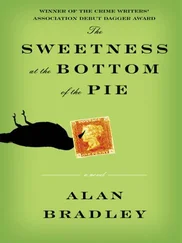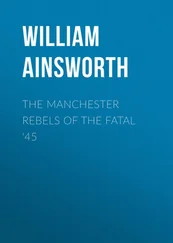213 geese and ducks exported from Guangdong:Yi Guan et al., “H5N1 Influenza Viruses Isolated from Geese in Southeastern China: Evidence for Genetic Reassortment and Interspecies Transmission to Ducks,” Virology 292, no. 1 (Jan. 5, 2002): 16-23.
213 duck meat exported from Shanghai:Terrence M. Tumpey et al., “Characterization of Highly Pathogenic H5N1 Avian Influenza A Virus Isolated from Duck Meat,” Journal of Virology 76, no. 12 (June 2002): 6344-55; and X. H. Lu et al., “Pathogenesis of and Immunity to a New Influenza A (H5N1) Virus Isolated from Duck Meat,” Avian Diseases 47 (2003): 1135-40.
213 had repeatedly come back positive:H. Chen et al., “The Evolution of H5N1 Influenza Viruses in Ducks in Southern China,” PNAS 101, no. 28 (July 13, 2004): 10452-57. For more discussion of the virus in Chinese ducks, see L. D. Sims et al., “Origin and Evolution of Highly Pathogenic H5N1 Avian Influenza in Asia,” Veterinary Record 157, no. 6 (Aug. 6, 2005): 159-64.
213 China as the wellspring:H. Chen et al., “Establishment of Multiple Sublineages of H5N1 Influenza Virus in Asia: Implications for Pandemic Control,” PNAS 103, no. 8 (Feb. 21, 2006): 2845-50. China’s health ministry dismissed this study, saying it jumped to conclusions. See Mary Ann Benitez and Joseph Ma, “H5N1 Kills 8th Person on Mainland,” South China Morning Post, Feb. 11, 2006.
214 vaccinating their flocks against it:Debora MacKenzie, “Bird Flu Outbreak Started a Year Ago,” New Scientist, Jan. 31, 2004.
214 an even riskier strategy:The account of amantadine use in Chinese poultry flocks is based on extensive interviews with animal-health experts and executives of pharmaceutical companies.
214 had become resistant to the drug:On amantadine resistance among some H5N1 variants, see K. S. Li et al., “Genesis of Highly Pathogenic and Potentially Pandemic H5N1 Influenza Virus in Eastern Asia,” Nature 430 (July 8, 2004): 209-13; T. T. Hien et al., “Avian Influenza A (H5N1) in 10 Patients in Vietnam,” NEJM 350 (2004): 1179-88; Natalia A. Ilyushina, Elena A. Govorkova, and Robert G. Webster, “Detection of Amantadine Resistant Variants Among Avian Influenza Viruses Isolated in North America and Asia,” Virology 341, no. 1 (Oct. 10, 2005), 102-6; and Chung-Lam Cheung et al., “Distribution of Amantadine-Resistant H5N1 Avian Influenza Variants in Asia,” Journal of Infectious Diseases 193 (June 15, 2006): 1626-29.
215 used the drug in poultry:Fu Jing, “Misuse of Antiviral on Poultry Must Stop,” China Daily, June 21, 2005.
216 in a pair of Hanoi markets:Doan C. Nguyen et al., “Isolation and Characterization of Avian Influenza Viruses, Including Highly Pathogenic H5N1, from Poultry in Live Bird Markets in Hanoi, Vietnam, in 2001,” Journal of Virology 79, no. 7 (Apr. 2005): 4201-14.
216 a new variant of the H5N1 virus:J. Wang et al., “Identification of the Progenitors of Indonesian and Vietnamese Avian Influenza A (H5N1) Viruses from Southern China,” Journal of Virology 82, no. 7 (Apr. 2008): 3405-14.
216 how it decimated poultry:Interviews with animal health officials in Ha Tay and Vinh Phuc provinces.
216 Japfa’s annual corporate filings:PT Japfa Comfeed Indonesia Tbk, Annual Report 2003; PT Multibreeder Adirama Indonesia Tbk, Annual Report 2003; and PT Japfa Comfeed Indonesia Tbk, Annual Report 2004.
216 hushed up their findings:Karl Taro Greenfeld, “On High Alert,” Time Asia, Jan. 26, 2005.
217 “the first signs of an epidemic”:Ibid.
217 first outbreak eventually confirmed:T. Delquigny et al., “Evolution and Impact of Avian Influenza Epidemic and Description of the Avian Production in Vietnam,” final report for FAO’s TCP/RAS/3010, Emergency Regional Support for Post Avian Influenza Rehabilitation (Rome: UN Food and Agriculture Organization, 2004).
218 at least three separate occasions:H. Chen et al., “Establishment of Multiple Sublineages of H5N1 Influenza Virus in Asia: Implications for Pandemic Control,” PNAS 103, no. 8 (Feb. 21, 2006): 2845-50.
218 the government had not responded:Ben Rowse, “Hospitalized Woman in Vietnam Tests Positive for Bird Flu,” Agence France Presse, Aug. 16, 2004.
218 were going unanswered:E-mail, Aug. 13, 2004.
218 “So basically, bugger all”:E-mail, Aug. 17, 2004.
218 “grave concerns”:Avian influenza update, WHO, Report from Hanoi office, Mar. 16, 2005.
218 they were flying blind:E-mail exchange between senior WHO officials in Geneva, Mar. 13, 2005.
220 widely praised by UN agencies:See, for example, FAO news release, “Once Hard Hit by Bird Flu, Vietnam Consolidates Progress,” Dec. 6, 2006; and WHO, “Successful Strategies in Controlling Avian Influenza,” INFOSAN Information Note no. 4/2006, Aug. 14, 2006.
220 called its performance “remarkable”:Comments from the U.S. Agency for International Development in appendix 2 of Influenza Pandemic: Efforts to Forestall Onset Are Underway; Identifying Countries at Greatest Risk Entails Challenges, Government Accountability Office, June 2007, GAO-07-604. The term remarkable was applied to both Vietnam and Thailand.
220 “The situation is alarming”:“Vietnam Battles Three Bird Flu Outbreaks,” DPA (German Press Agency) article published in the Bangkok Post, Dec. 22, 2006.
222 Their revelations hit the streets:Duc Trung and Hoai Nam, “Chances of Bird Flu to Break Out, Quarantine Papers Are Sold like Vegetables,” Thanh Nieh, Aug. 16, 2005.
222 spread to nearly one-third of Indonesia’s provinces:Remarks of Agriculture Minister Bungaran Saragih in Material of Consultative Meeting Between Minister of Agriculture and Commission III DPR on Avian Influenza, Jan. 29, 2004.
222 provenance of the Indonesian strain:J. Wang et al., “Identification of the Progenitors of Indonesian and Vietnamese Avian Influenza A (H5N1) Viruses from Southern China,” Journal of Virology 82, no. 7 (Apr. 2008): 3405-14.
223 separate findings of a pathologist:Walujo Budi Priyono of the Disease Investigation Centre in Yogyakarta, quoted in FAO news release, “Virus Detective Work in Indonesia: The Case of the Mysterious Livestock Disease,” 2005.
223 “As of now, there are no findings”:Sofyan Sudrajat in Republika, Jan. 25, 2004.
224 10 million chickens:“Death of 10 Million Laying Hens in Indonesia from Bird Flu,” Kompas, Jan. 25, 2004.
224 trade in poultry and poultry products:G. J. D. Smith et al., “Evolution and Adaptation of H5N1 Influenza Virus in Avian and Human Hosts in Indonesia and Vietnam,” Virology 350 (2006): 258-68.
224 “Indonesia is a time-bomb”:“Indonesia Is a Bird-Flu Time-Bomb, Animal Health Chief,” Agence France Presse, Apr. 14, 2006.
225 She repeated her allegations:Agnes Aristiarini, “Fighting Against Bird Flu,” Kompas, Sept. 20, 2005.
225 because of party politics:“Avian Flu Expert Speaks Out,” Van Zorge Report , Apr. 12, 2006.
226 “the lack of a national strategy”:Katia Dolmadjian, “Animal Health Experts Discuss Merits of Vaccination Against Bird Flu,” Agence France Presse, Mar. 22, 2007. On how the poultry epidemic in Indonesia continued to pose a threat to human health, see Endang R. Sedyaningsih et al., “Epidemiology of Cases of H5N1 Virus Infection in Indonesia, July 2005-July 2006,” Journal of Infectious Diseases 196 (Aug. 15, 2007): 522-27.
Читать дальше











